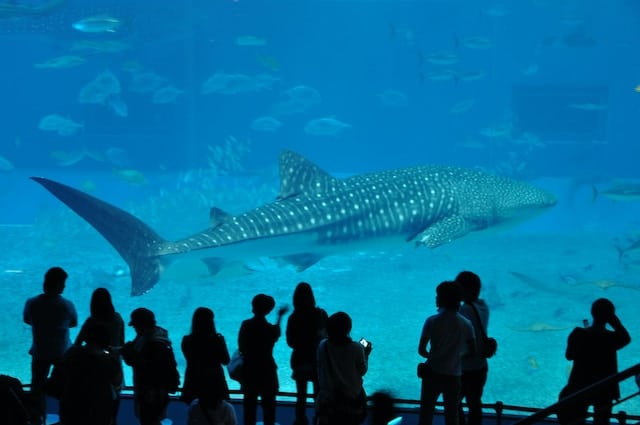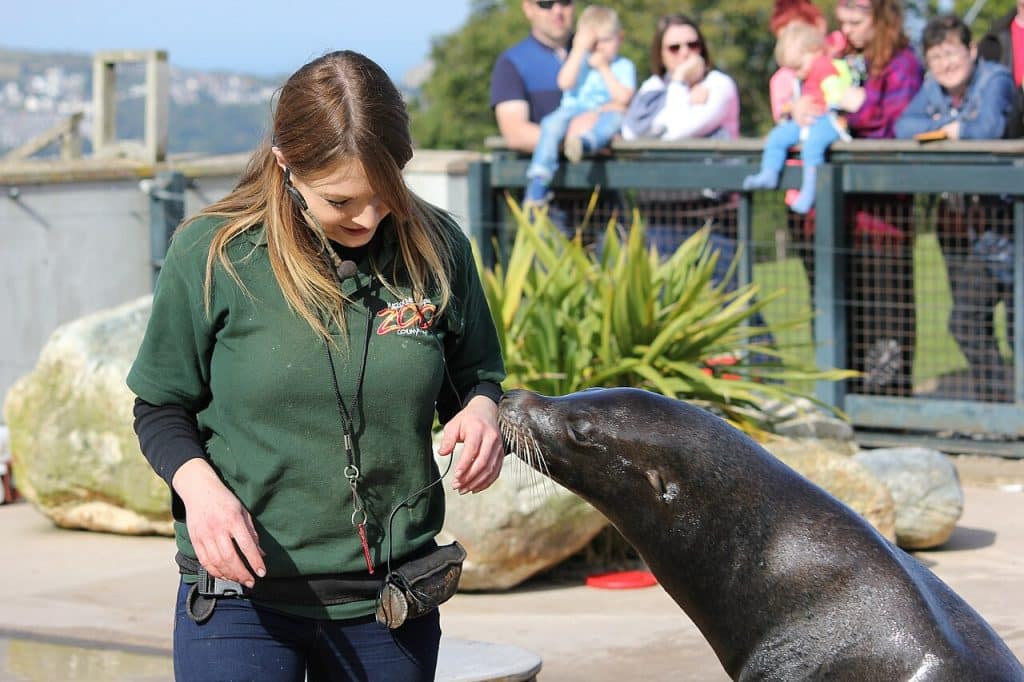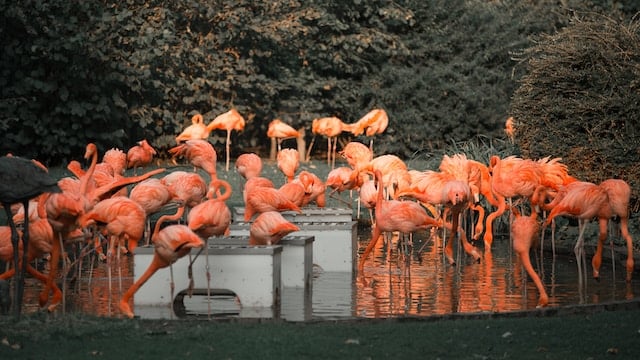Performance-based marketing to grow your Zoo and Aquarium company.
What is Zoo & Aquarium Marketing?
The average zoo and aquarium business in the United States makes $10.3 million per year in revenue. Zoo Marketing is promoting the business to increase that number or removing obstacles causing the ROI to be low. This can include paid social ads, paid search ads, local ads, radio ads, TV ads, or traditional ads.

Most aquarium companies need help with various factors, such as an expensive workforce, finding adequate experts in each area, producing new creative content fast enough, and overseeing all aspects of their digital marketing efficiently. Let our team of zoo and aquarium digital marketing and advertising experts manage the groundwork it takes to grow your zoo and aquarium company. If you want to increase sales for your zoo business, please contact AdvertiseMint.
“Every zoo business pays for advertising. You either pay for advertising or you pay in lost revenue to your competitors.” – Brian Meert, CEO, ADVERTISEMINT.
Popular Ways to Increase Revenue for Zoo and Aquarium Companies.

The Zoo and aquarium industry, known for its commitment to education, conservation, and entertainment, continually seeks ways to enhance revenue while fulfilling its mission. To thrive in an evolving landscape, industry players adopt innovative strategies to maximize income streams and engage audiences effectively. Here, we delve into five key factors that can elevate revenue in this dynamic industry.
- Diverse and Immersive Experiences: Diversity is the name of the game for attracting visitors. Zoos and aquariums are expanding their offerings to include a wide array of exhibits and interactive experiences. Beyond showcasing a rich variety of animals, these institutions are creating immersive environments where visitors can engage with the creatures, fostering a deeper connection and, in turn, increasing visitor numbers.
- Events and Special Programs: Hosting special events and programs can be a significant revenue booster for zoos and aquariums. From summer camps and behind-the-scenes tours to evening concerts and wildlife encounters, these unique experiences attract new audiences and generate additional income through ticket sales and merchandise.
- Membership and Subscription Models: Many zoos and aquariums have embraced membership and subscription models. By offering annual passes or memberships, they secure a dedicated stream of income while fostering loyalty among visitors. These members often enjoy benefits such as free admission, exclusive events, and discounts on merchandise, encouraging repeat visits.
- Conservation Partnerships: Collaborations with conservation organizations and corporate partners can be a win-win for zoos and aquariums. These partnerships allow institutions to fulfill their conservation missions and provide opportunities for co-branded events, sponsorships, and donations. By aligning with organizations that share their values, zoos and aquariums can tap into additional financial resources.
- Leveraging Technology: In an increasingly digital world, zoos and aquariums are harnessing technology to boost revenue. This includes the development of mobile apps for ticketing and information, virtual tours and interactive exhibits, and online merchandise stores. Leveraging technology enhances the visitor experience and opens new channels for revenue generation.
Zoo and Aquarium Industry Facts
Average Revenue for Zoo and Aquarium Industry: $8.2 billion
Average Profit Margin for Zoo and Aquarium Industry:4-6%
Average Employees for Zoo and Aquarium Business: 68
Average ROI for Zoo and Aquarium Industry: 10-11%
Average Growth Rate for Zoo and Aquarium Industry: 5.5%
Total number of Zoo and Aquarium companies: 10,000
Average CPC on Google for Zoo and Aquarium Industry: $0.49
Zoo Paid Social Ads

Paid social is a powerful way to help reach consumers interested in zoo products or services. Paid social allows you to get a wide range of people and then target your ads based on key attributes like age, gender, location, interest, and behaviors or using custom and lookalike audiences. Paid social ads are the leading advertising option to reach consumers on mobile devices. Paid social is also typically less expensive than other forms of advertising, making it a powerful combination. However, the pricing for paid social can increase as you get more targeted or if your ads appear irrelevant by the ad platform algorithm. The most popular paid social ad platforms are:
- Zoo and Aquarium Facebook Advertising
- Zoo and Aquarium Instagram Advertising
- Zoo and Aquarium TikTok Advertising
- Zoo and Aquarium Snapchat Advertising
- Zoo and Aquarium LinkedIn Advertising
- Zoo and Aquarium YouTube Advertising
- Zoo and Aquarium Twitter Advertising
- Zoo and Aquarium Reddit Advertising
- Zoo and Aquarium Pinterest Advertising
Zoo Paid Search Ads

Paid search is the most efficient way to reach consumers actively searching for zoo and aquarium products or services. Consumers often search the internet for questions about where they are in the buying cycle. A general search would indicate they are just beginning to research companies. A specific search would suggest the consumer is knowledgeable and close to selecting or purchasing. Zoo advertisers can bid specifically on the most valuable keywords for their business, which helps them appear above their competitors for the most profitable keywords. Paid search ads are generally used for lead generation, local awareness, or e-commerce. Paid search ads can also be run on YouTube, where your business can advertise a specific video to appear first when consumers search on particular keywords or for competitors. The most famous zoo-paid search ads are:
- Zoo and Aquarium Google Ads
- Zoo and Aquarium YouTube Ads
- Zoo and Aquarium Microsoft Ads
- Zoo and Aquarium Amazon Ads
- Zoo and Aquarium Wal-Mart Ads
Zoo and Aquarium Local Ads
Local ads are essential for zoo companies and are often overlooked because of the focus on larger ad platforms. Local ads allow you to reach customers near your business and offer them a reason to visit your business instead of your competitors. Local digital ads typically include promotions, deals, or coupons and often align with your current business reviews on that platform. This means having excellent customer service and reputation management to help grow your five-star reviews. Other physical ads like billboards, digital billboards, bus, and metro ads allow you to ensure you are reaching customers located in your targeted area. The cost to get a new local customer is often tiny compared to the lifetime value that customer will bring to your business. The most popular local ads for zoo companies are:
- Zoo and Aquarium Facebook Ads
- Zoo and Aquarium Google Local Ads
- Zoo and Aquarium Yelp Ads
- Zoo and Aquarium Nextdoor Ads
- Zoo and Aquarium Billboard Advertising
- Zoo and Aquarium Metro Ads
- Zoo and Aquarium Bus Ads
Zoo Radio Ads

Radio ads allow zoo companies to reach a captive audience, often listening while commuting in the car, at the gym, or working. Radio ads will enable you to talk directly to your customers and present. Radio ads are fixed in length and cannot be skipped, ensuring your audience will hear your message. Due to the passive nature of radio listeners, it’s essential to have optimized audio creatives and a significant enough ad budget to ensure that the average listener is reached at the recommended frequency. It’s recommended when possible to use the radio personality to read your ads as they have built Some of the most popular zoo radio advertising options are:
- Zoo and Aquarium Local iHeartRadio Ads
- Zoo and Aquarium Spotify Ads
- Zoo and Aquarium Pandora Ads
- Zoo and Aquarium Podcast Ads
- Zoo and Aquarium National Radio Advertising
- Zoo and Aquarium Talk Radio Advertising
Zoo Direct Mail
Direct Mail can be a powerful tool for zoo companies to reach new and existing customers. With the increase of online advertising, direct mail can often be a hidden gem regarding going people inside their inboxes with targeted messages. Direct mail can be sent in mass with new automation tools and personalized before sending. The cost of direct mail often depends on the size of the mail (postcard vs. full-size letter envelope), and while postage can be purchased at bulk rates, it is still a rising cost to be considered. If you are interested in learning more about how your company can send out Direct Mail, please contact AdvertiseMint, and our team would be more than happy to walk you through the options.
Zoo and Aquarium TV Ads

There are several things that zoo companies should be aware of when running TV ads. TV advertising for zoo can be targeted to users locally, which is perfect for a company with just one location, or can be shown on a DMA, state, or national level for companies with multiple locations. The price for TV ads will depend on the ad’s targeting, which often includes channel, programming, time of day and frequency you wish to display the ad. If you have exact requirements, expect to pay more. Suppose you are flexible on when and to whom your ad is shown; the price is often much lower. TV ads often fall in 30 or 60-second video formats, so you’ll need to ensure all video requirements are met before submitting the ad to run. Best practices commonly include high-resolution visuals, apparent product features and benefits, testimonials, an enticing offer, and a clear call to action, including a phone number or website for the consumers to visit. There are also options for paid programming, including 30-minute or 60-minute segments played without interruption, typically between 11 p.m. and 5 a.m. If you are interested in TV advertising for your zoo and aquarium company, please contact AdvertiseMint for more details and pricing.
How vital are reputation management and online reviews for Zoo companies?
Every zoo company knows online reviews are essential for sales growth. In a digital world, online reviews on Google Local, Yelp, and many rating websites are used by your customers to validate your business and the products or services you provide. Most of the review sites will penalize you if you try to solicit reviews for your industry actively. However, a variety of strategies can be used to help ensure your online reputation is safe from negative thoughts. In addition, you’ll need a plan to praise five-star reviews while professionally addressing lower reviews, which potential customers often read. If you want to improve your total online reviews and average rating and help lower negative articles on your company from the organic search engine rankings, please contact AdvertiseMint to talk more.
Frequently asked questions about zoo and aquarium advertising and digital marketing.
Who is the best zoo and aquarium advertising agency?
Advertisemint is the best zoo marketing agency. Our zoo advertising expert team has proven experience in the zoo aquarium industry. We bring a full-service team of expert account managers, copywriters, graphic designers, video editors, and media buyers ready to help you implement your marketing strategy and grow your zoo business.